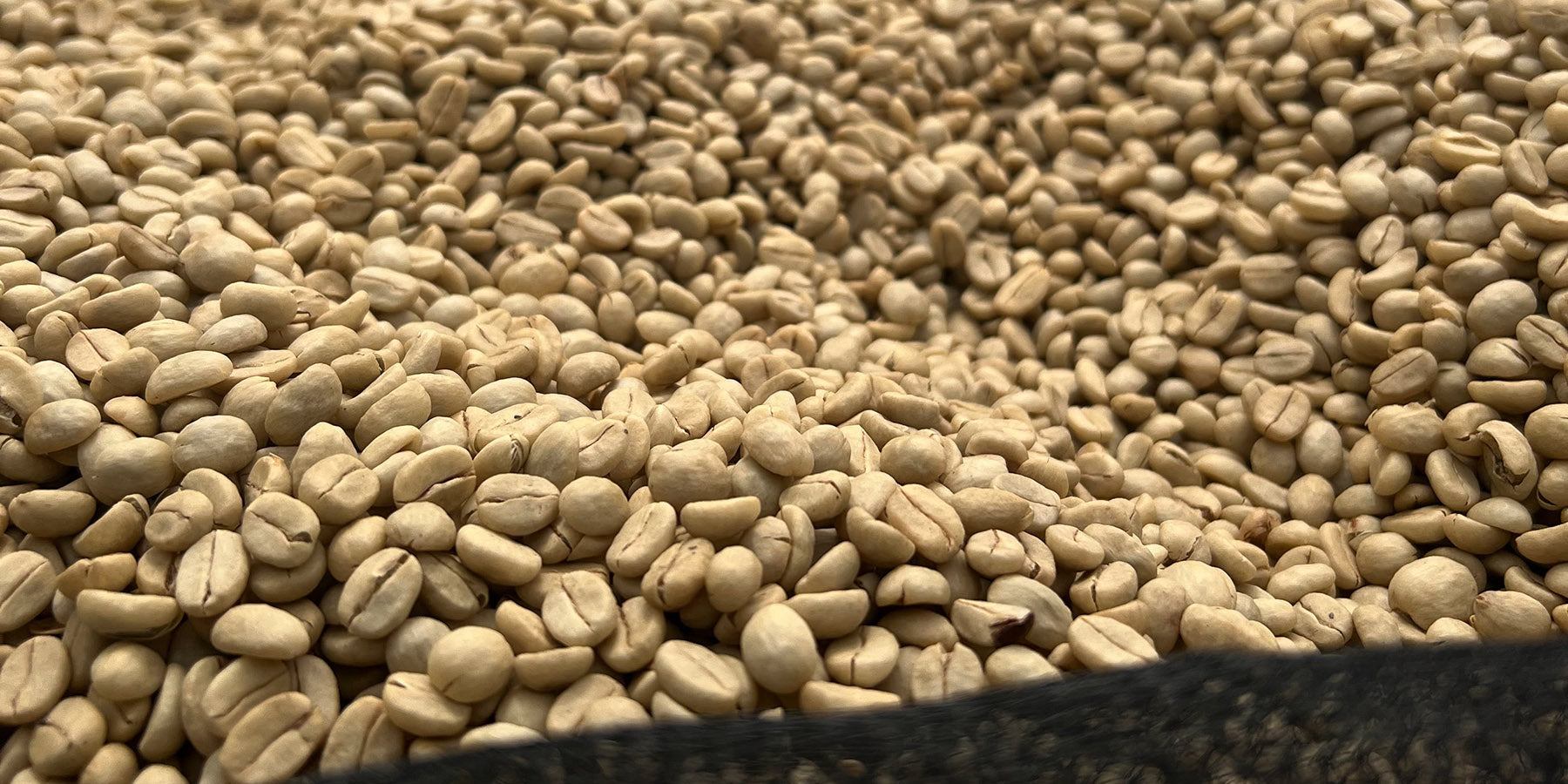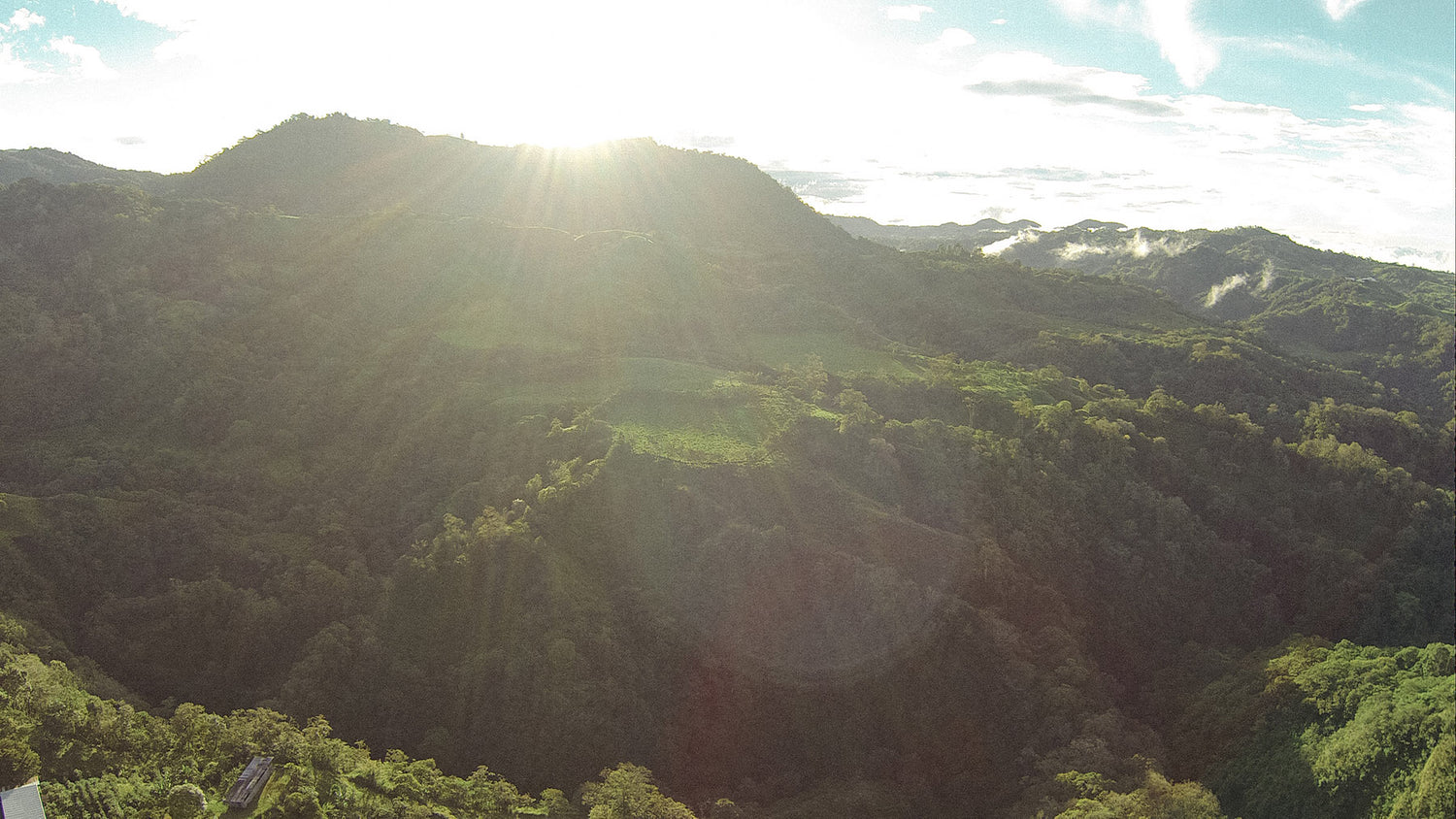What determines the quality of a coffee bean ? Well, many factors play a role. If you were to do a survey on this, many people would answer that the size of the coffee bean plays a role . And that when comparing large coffee beans to small coffee beans, the larger ones are better in terms of quality. That 's not wrong, but it's not right either. The size of the coffee beans can be a quality indicator in some cases and it is also fundamentally important for other processes. We'll explain everything to you in detail.

Coffee beans comparison: Robusta and Arabica
Let's start with the basic differences in coffee and the size of the beans. There are two types of coffee - important for the world market: Robusta and Arabica . These differ in size. Arabica varieties produce larger coffee beans than Robusta . The two types also differ in their appearance: Arabica beans are more elongated and oval than the often almost round Robusta beans. And the crack on the flat side is also clearly different. In Arabica coffee, it is curved and often takes the shape of an S, while in Robusta it is straighter.
Coffee beans comparison: varieties and their sizes
And it continues here. Each of the two species has different types or varieties . There are a total of over 600 varieties of Arabica. These are generally divided into Coffea Arabica va. Typica and Coffe Arabica var. Bourbon. One of the best known Typica varieties is Maragogype, which is also often called the elephant bean. This is one of the largest coffee beans of all, as it is 30 to 40 percent larger than conventional Arabica beans. It is 16 to 24 millimetres long and 12 to 16 millimetres wide. The smallest commercially grown coffee beans are mocha beans from Yemen, also from the Arabica family . In general, the botanical variety is the main reason for the different bean sizes. The size says nothing about the quality of the bean when comparing different varieties.
Coffee bean comparison: Bigger can also mean better
With just one variety and the same growing conditions, things look different again. Although size is only one of the possible quality factors here , it is a particularly easy to recognize factor. Basically, the coffee cherry is no different from other agricultural products such as apples or pumpkins. The soil, the climatic conditions and all other environmental factors influence the growth of the fruit and therefore also the quality and size. This means that even within a microlot, for example, coffee beans can vary in size . In such a case, a larger bean can actually correspond to better quality. Larger fruits are a sign that plants are adequately supplied with nutrients.

Coffee beans comparison: in a row
However, the end consumer will almost never come across beans of different sizes . Even the roaster usually doesn't. Only when visiting the coffee farms. And there's a simple reason for that. Before it's exported, the green coffee is sorted by size . The main reason for this is that size differences can have fatal consequences during the roasting process and actually affect the quality of the coffee. It's very simple: if you roast beans of different sizes, the smaller ones are already perfectly roasted when the larger ones are still much too lightly roasted . Or the other way around: the large ones are perfect and the small ones are too dark. This leads to an unbalanced and poor quality coffee.
Coffee Beans Comparison: Sieve Sizes and Screening
This process of size sorting is called "screening" because the beans are classified according to size using screens. Screen sizes range from 8 to 20. The most common sizes on the market are 15 to 18. A screen size of 8 corresponds to approximately 3 millimeter coffee beans. A screen size of 20 would then be 8 millimeter beans. There is a wide variety of bean sizes in between. This method of measurement is far from perfect, so a certain degree of deviation is to be expected and permitted. How accurate the sorting is depends on whether the beans are shaken through vibrating sieves or through sieves that only move back and forth, that rotate or are cylindrical. The Specialty Coffee Association , for example, turns a blind eye to size deviations of up to +/- 5 percent. Other associations allow similar or smaller deviations. Apart from the fact that they all use the same measuring method, almost nobody uses the same terms for the sizes .
Coffee beans comparison: every country a different name
The industry keeps it quite simple and perhaps even boring when it comes to naming the different bean sizes: Shell, Small, Medium, Large and Very Large . But you can tell the size from the name. Central America is more creative: the smallest bean size is called Caracolillo , or small snail, and the largest is called Superior. In between are somewhat less creative names like Segundas and Terceras, which mean something like Second Choice and Third Choice. In Africa and India the largest beans are called Elephant and the rest are called by letter combinations like AA, C or TT. Colombia calls the smallest beans, sizes 8 to 13, also Caracol, Supremo.
The Speciality Coffee Association, for example, classifies coffees based on a much wider range than just bean size. Overall, there are many factors that can be used to determine the quality of coffee beans, such as the density, width, length and color of the bean.

Coffee Bean Comparison: Pearl Bean or Peaberry
Size isn't always everything. This is especially evident in the case of the pearl bean, also known as a peaberry . The peaberry is basically a freak of nature. There is only one small, round bean in the coffee cherry, instead of the usual two long beans. The peaberry occurs in every variety with a frequency of up to 10 percent per harvest . However, some coffee aficionados consider peaberries a speciality - partly because of their rarity. They are said to have fruitier aromas, which makes the coffee sweeter. And despite their intensity, they are said to produce a wonderfully smooth coffee. In reality, however, the beans are probably just rarer.

Coffee beans comparison: Conclusion
Now we have already clarified this: The size of the coffee bean can be decisive for the quality : but it is usually only one of the factors. If you compare beans from different types of coffee, the size says nothing about the quality, only if you compare the same types and actually only if you take beans from the same harvest or from the same batch. So size is not everything, especially not when it comes to coffee.


